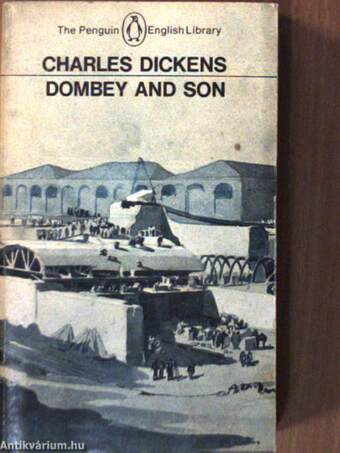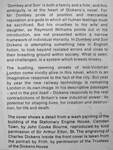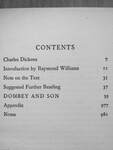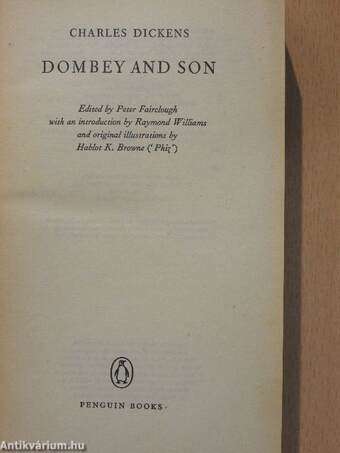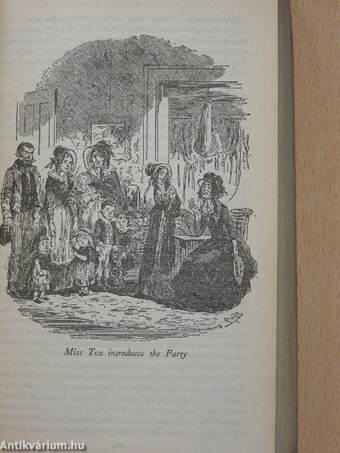1.068.961
kiadvánnyal nyújtjuk Magyarország legnagyobb antikvár könyv-kínálatát

VISSZA
A TETEJÉRE
JAVASLATOKÉszre-
vételek
Dombey and Son
Dombey és fia
| Kiadó: | Penguin Books Ltd |
|---|---|
| Kiadás helye: | Harmondsworth |
| Kiadás éve: | |
| Kötés típusa: | Ragasztott papírkötés |
| Oldalszám: | 992 oldal |
| Sorozatcím: | The Penguin English Library |
| Kötetszám: | |
| Nyelv: | Angol |
| Méret: | 18 cm x 11 cm |
| ISBN: | 0-14-043048-2 |
| Megjegyzés: | Fekete-fehér illusztrációkkal. |
naponta értesítjük a beérkező friss
kiadványokról
naponta értesítjük a beérkező friss
kiadványokról
Fülszöveg
'Dombey and Son' is both a family and afirm; and this
ambiguity is at the heart of Dickens's novel. For
Mr Dombey pride of position and mercantile
reputation are gods to which all human feelings must
be sacrificed. But his cruelties to his wife and
daughter, as Raymond Williams points out in his
introduction, are not presented within a narrow
framework of individual morality. In Dombey and Son
Dickens is attempting something new in English
fiction, to look beyond isolated errors and vices to
their breeding ground within society. What is seen,
and challenged, is a system which breeds misery.
The bustling, teeming streets of mid-Victorian
London come vividly alive in this novel, which is an
imaginative response to the fact of the city. But year
by year the new railway technology is remaking
London in its own image. In his descriptive passages
- and in the plot itself - Dickens responds to the real
contradictions of Britain's new industrial power; its
potential for... Tovább
Fülszöveg
'Dombey and Son' is both a family and afirm; and this
ambiguity is at the heart of Dickens's novel. For
Mr Dombey pride of position and mercantile
reputation are gods to which all human feelings must
be sacrificed. But his cruelties to his wife and
daughter, as Raymond Williams points out in his
introduction, are not presented within a narrow
framework of individual morality. In Dombey and Son
Dickens is attempting something new in English
fiction, to look beyond isolated errors and vices to
their breeding ground within society. What is seen,
and challenged, is a system which breeds misery.
The bustling, teeming streets of mid-Victorian
London come vividly alive in this novel, which is an
imaginative response to the fact of the city. But year
by year the new railway technology is remaking
London in its own image. In his descriptive passages
- and in the plot itself - Dickens responds to the real
contradictions of Britain's new industrial power; its
potential for shaping lives, for creation and destruc-
tion, for life and death.
44
The cover shows a detail from a wash painting of the
building of the Stationary Engine House, Camden
Town, by John Cooke Bourne, reproduced by kind
permission of Sir Arthur Elton, Bt. The engraving of .
Charles Dickens inside the front cover is taken from
the portrait by Frith, by permission of the Trustees
of the Dickens House Vissza
Témakörök
- Idegennyelv > Idegennyelvű könyvek > Angol > Szépirodalom > Regény, novella, elbeszélés
- Szépirodalom > Regény, novella, elbeszélés > Az író származása szerint > Európa > Nagy-Britannia
- Szépirodalom > Regény, novella, elbeszélés > Tartalom szerint > Családregények
- Szépirodalom > Regény, novella, elbeszélés > Tartalom szerint > Filmregények
- Szépirodalom > Regény, novella, elbeszélés > Tartalom szerint > Kor- és társadalomrajz
Charles Dickens
Charles Dickens műveinek az Antikvarium.hu-n kapható vagy előjegyezhető listáját itt tekintheti meg: Charles Dickens könyvek, művekMegvásárolható példányok
Nincs megvásárolható példány
A könyv összes megrendelhető példánya elfogyott. Ha kívánja, előjegyezheti a könyvet, és amint a könyv egy újabb példánya elérhető lesz, értesítjük.



